Related Research Articles

The stitchbird or hihi is a honeyeater-like bird endemic to the North Island and adjacent offshore islands of New Zealand. Its evolutionary relationships have long puzzled ornithologists, but it is now classed as the only member of its own family, the Notiomystidae. It became rare, being extirpated everywhere except Little Barrier Island, but has been reintroduced to two other island sanctuaries and four locations on the North Island mainland.
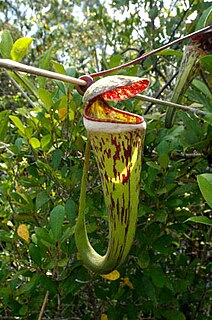
Nepenthes × cincta is a natural hybrid between N. albomarginata and N. northiana.
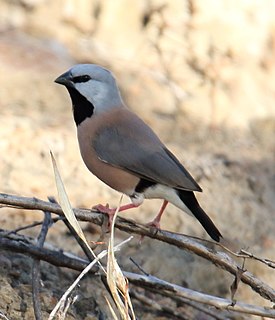
The black-throated finch, or parson finch, is a species of estrildid finch found in grassy woodlands throughout north-east Australia from Cape York Peninsula to central Queensland. The Southern black-throated finch is endangered, with a population in decline and its habitat is threatened by development, and has become extinct in New South Wales, while the Northern black-throated finch is not listed as threatened at this point.
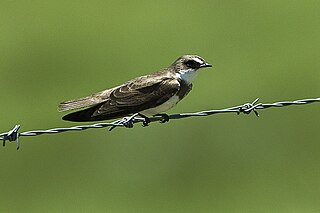
The banded martin or banded sand martin is a small passerine bird in the swallow family Hirundinidae that is endemic to Africa.

The banded hickory borer, Knulliana cincta, is a species of longhorn beetle and the only species in the genus Knulliana. It is about 15–30 mm in length occurring throughout the eastern half of North America, including Mexico and the Bahamas, with one subspecies extending to the Sonoran Desert. If roughly handled it may start to squeak furiously. They are usually found on hickory trees and oak trees, where they lay their eggs; the larvae bore into the trees, sometimes doing significant damage. There are three described subspecies:

Cominella is a genus of carnivorous sea snails, a marine gastropod mollusc in the family Buccinidae, the true whelks.
Glossodoris cincta is a species of sea slug, a dorid nudibranch, a shell-less marine gastropod mollusk in the family Chromodorididae. This name has been extensively used for a group of similarly coloured species, some of which are un-named.
Tritoniopsis cincta is a species of dendronotid nudibranch. It is a marine gastropod mollusc in the family Tritoniidae.
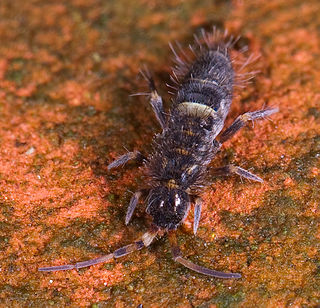
Orchesella cincta is a species of springtail present in North America and Europe. They average 4 millimetres (0.16 in) in length, which is extremely large as most springtails don’t grow past 1 millimetre. The specific name cincta means "belted" and refers to the distinctive colouration of the third abdominal segment.

Burnupena cincta, common name the ridged burnupena, is a species of sea snail, a marine gastropod mollusk in the family Buccinidae, the true whelks.
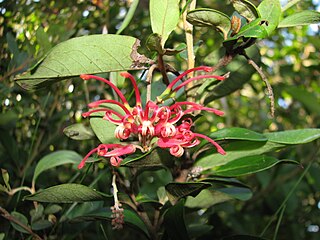
Grevillea miqueliana, commonly known as oval-leaf grevillea, is a shrub that is endemic to mountainous areas of eastern Victoria in Australia. It grows to between 1.5 and 2.5 metres in height. The species was first formally described by botanist Ferdinand von Mueller, his description published in Transactions of the Philosophical Society of Victoria in 1855. The species epithet honours Dutch botanist Friedrich Anton Wilhelm Miquel (1811-1871).
Tethystola inermis is a species of beetle in the family Cerambycidae. It was described by Galileo and Martins in 2001 and is known to be from Venezuela.
Tethystola unifasciata is a species of beetle in the family Cerambycidae. It was described by Galileo and Martins in 2001. It is known from Peru.
Tethystola brasiliensis is a species of beetle in the family Cerambycidae. It was described by Breuning in 1940. It is known from Brazil.
Tethystola dispar is a species of beetle in the family Cerambycidae. It was described by Lameere in 1893. It is known from Venezuela.
Tethystola mutica is a species of beetle in the family Cerambycidae. It was described by Gaha in 1895. It is known from Grenada, St. Vincent, and Trinidad and Tobago.
Tethystola obliqua is a species of beetle in the family Cerambycidae. It was described by Thomson in 1868. It is known from Venezuela.

Melanopolia cincta is a species of beetle in the family Cerambycidae. It was described by Karl Jordan in 1903. It is known from Equatorial Guinea, Cameroon and Gabon. It contains the varietas Melanopolia cincta var. maculata.

Diadumene cincta is a small and delicate, usually orange, sea anemone. It has a smooth slender column and up to 200 long tentacles, and normally grows to a length of up to 35 mm (1.4 in), with a base of 10 mm (0.4 in), but specimens twice this size have been recorded. Diadumene cincta is found in the northeastern Atlantic Ocean.
Autochton cincta, the chisos banded skipper, is a species of dicot skipper in the butterfly family Hesperiidae. It is found in Central America and North America.
References
- ↑ BioLib.cz - Tethystola cincta. Retrieved on 8 September 2014.
| This Apomecynini article is a stub. You can help Wikipedia by expanding it. |